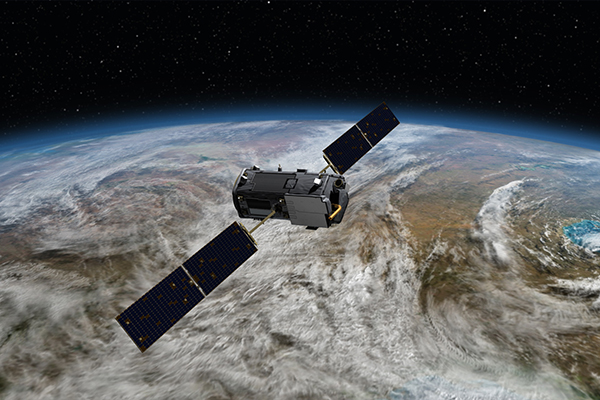July 3, 2014
UOW expertise part of NASA satellite mission to watch the planet breathe
UOW scientists will be providing key scientific expertise and data as part of a NASA satellite mission aimed at better understanding how the Earth inhales and exhales carbon dioxide and its effect on climate change.
NASA’s Orbiting Carbon Observatory-2 (OCO-2) satellite based at the Jet Propulsion Laboratory (JPL), launched on 2 July from Vandenberg Air Force Base, California, United States.
The observatory mission is devoted to gathering data to build a more precise picture of the abundance of carbon dioxide, a critical component of Earth’s carbon cycle and a key driver of changes in Earth’s climate.
UOW statistician and Director of the Centre for Environmental Informatics in the National Institute for Applied Statistics Research Australia (NIASRA), Distinguished Professor Noel Cressie, is a member of the NASA’s satellite mission’s science team. He will be analysing data collected throughout the mission.
UOW’s Centre for Atmospheric Chemistry will supply data from ground sites in Wollongong and Darwin that will be used to validate the observatory measurements.
Carbon dioxide and other greenhouse gases such as methane absorb energy and hold it within the Earth’s atmosphere, much like a blanket, making the earth warmer.
Carbon dioxide in the atmosphere is measured in parts per million (ppm), the number of molecules of carbon dioxide in every million molecules of air. The Mauna Loa observatory currently records that number at around 400 ppm, the highest in recorded history.
When fossil fuels are burned, carbon dioxide is emitted, or exhaled, into the atmosphere while natural sources such as plant decay and fires add to the amount of airborne carbon dioxide. To maintain balance in the carbon cycle, Earth absorbs, or inhales, carbon dioxide through vegetation growth and uptake by the oceans that form carbon sinks.
Currently, the carbon sinks absorb only about half the total carbon dioxide emitted per year. If a sink cannot absorb any more carbon dioxide it can flip and become a source, emitting the excess gas.
Professor Cressie, currently serving a two-year appointment as a JPL Distinguished Visiting Scientist, said each measurement collected by the observatory would be an average of the number of carbon dioxide molecules per million molecules of dry air in an atmospheric column from the satellite to Earth’s surface.
“The observatory will circle Earth every 99 minutes, collecting up to 24 measurements a second, and global coverage will be obtained after the observatory completes 233 orbits every 16 days,” Professor Cressie said. “These massive datasets require sophisticated modelling and carefully derived measures of uncertainty to enable us to ultimately obtain accurate and precise estimates of carbon dioxide sources and sinks.”
CAC and former JPL research fellow Dr Voltaire Velazco said the ground instrument at UOW and another in Darwin monitored by UOW scientists capture infrared light rays, which are absorbed by carbon dioxide, leaving a unique signature or fingerprint that can be measured to determine the amount of carbon dioxide in the air.
“While the satellite is looking down on earth our instrument is looking up, so to speak,” he said. “As the observatory satellite flies over each of the 19 ground stations around the world, it will point its sensors and ‘stare’ at each station. That means the observatory and the ground station are taking measurements from the same vertical column in the atmosphere.”
Dr Velazco said the UOW data would then be fed to NASA and the ground data sets from all the stations will help validate the observatory measurements to give the most precise picture yet of carbon dioxide in the atmosphere and how much is absorbed in sinks.
OCO-2 Science Team Leader Dr David Crisp said: “As a member of OCO-2 Science Team, Professor Cressie and his colleagues will play a critical role in our efforts to assess the information content of the OCO-2 observations and the accuracy of the atmospheric carbon dioxide estimates derived from these measurements.”
More: To learn more about the Orbiting Carbon Observatory-2, visit: oco.jpl.nasa.gov and nasa.gov/oco-2.
Note to media: Professor Noel Cressie will available for interview by phone from the United States on +1 614 364 2747 or via email at ncressie@uow.edu.au (Australian Eastern time is +17 hours ahead of US Pacific Daylight Time).
Media contact: Grant Reynolds, UOW Media & PR Officer, on +61 2 4221 4743, +61 417 010 350 or grantr@uow.edu.au. NASA and mission-related enquiries should be directed to Alan Buis, Jet Propulsion Laboratory, Pasadena, California on +1 818 354 0474 or Alan.Buis@jpl.nasa.gov.
